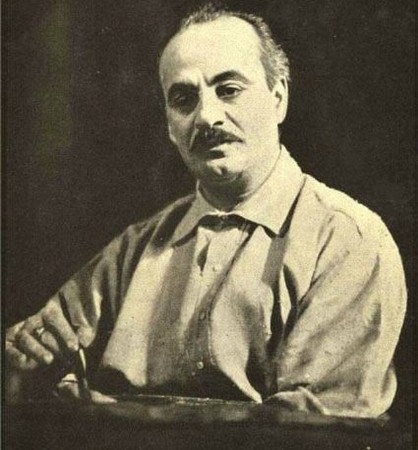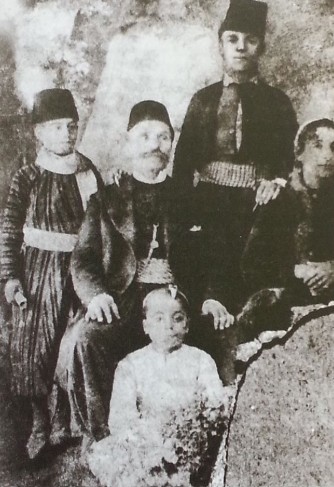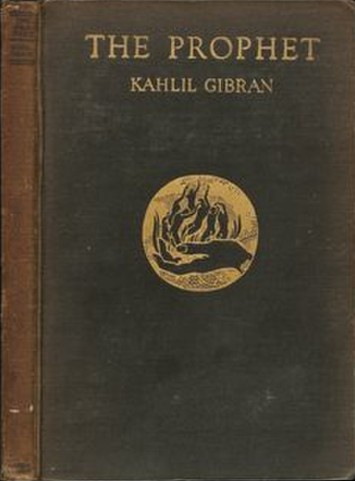Gibran Kahlil Gibran 94 Years After His Death

By Rena Elhessen / Arab American Contributing Writer
Gibran Kahlil Gibran continues to be one of the most popular names in the Arab world despite his passing over 94 years ago. Known for his contributions to Arabic poetry and literature, his work remains a pillar of Arab American diasporic writing. His exploration of Arab American identity and the feeling of diaspora continues to resonate with Arab Americans today. His works, most notably The Prophet, revolutionized Arab society and American philosophy.
Gibran passed away on April 10, 1931, and on the 94th anniversary of his passing, we remember the profound contributions Gibran Kahlil Gibran made to his community and country. His legacy endures, and his words continue to inspire people around the world.
Early Life

Jubran Khalil Jubran was born on January 6, 1883, in the village of Bisharri in what was then considered Ottoman Syria. Today, this location is known as northern Lebanon. He was born to Kamila Jubran and Khalil Sa’d Jubran. He had a half-brother and two younger sisters. The family were Maronite Catholics, and his mother was the daughter of a Maronite priest. His father owned a walnut grove and was a collector of taxes for the village headman. Since this area suffered economically under Ottoman rule, his father’s position was not looked upon favorably. Rather than tend to these jobs, Jubran’s father was a violent drinker and a gambler. Eventually, his father’s property was confiscated under Ottoman rule.
Jubran credits much of his love of nature and art to his upbringing in present-day Lebanon. His early education was considered to be of lesser quality than what was available. At the age of 12, Jubran’s mother left her husband and took the children to the United States. Jubran Khalil Jubran arrived in New York and settled in Boston with his mother and his siblings, making him among the first Arab American immigrants.
Gibran’s Arab American Experience
Upon arriving to America, Jubran Khalil Jubran became written as Gibran Kahlil Gibran by American immigration. His family settled in the Syrian and Lebanese community of Boston, Massachusetts. During this time, Gibran learned English and enrolled in art classes. His mother supported the family, working as a seamstress and peddling linens.
At the age of 15, Gibran’s mother sent him to Beirut, Lebanon, demanding he attend a Maronite school. His return to America in 1902 was marked with sorrow, with his sister, half-brother, and mother dying within the first two years of his return. He resided with his remaining sister in Boston, where she worked as a dressmaker to support them.
Gibran’s Early Works
Gibran’s first published articles date back to 1904, when he began writing for an Arabic language newspaper. During this year, he also had a public exhibit of his drawings. His artwork attracted the attention of Mary Haskell, who then became his lifelong patron. Haskell paid for him to study art in Paris in 1908, and sponsored his settlement in New York City in 1911. While in New York, Gibran met his publisher, Alfred Knopf. In 1918, Gibran published his first book of poems and parables, The Madman.

During World War I
When World War I began, Gibran supported Syrian nationalist groups trying to bring relief to the starving people of his homeland. During this time, he published his first book in English. The Madman: His Parables and Poems published in 1918 marks a shift in his works. Here, his work began to take on a bitter tone. Poems in this collection include the first mentions of diaspora and migration to a foreign land.
A revolutionary work of his influenced the literature of the Arab world. In 1920, Gibran released a collection of works written during the war, al-’Awasif. This collection was published in Cairo following the end of the Ottoman Empire, marking this publication significant to the Arab world as it gained popularity during a time of significant change and revitalization. The collection touches upon controversial topics of societal corruption, religious traditionalism, and moral righteousness. As the Arab world was reeling from the destruction of World War I, Gibran’s writing style and freedom of expression revitalized Arab literature and culture.
The Prophet
Kahlil Gibran’s The Prophet was published in 1923 and quickly became his most famous work. Though literary reviews for this collection dismissed the book entirely, public reception made this book a bestseller. The first edition of this collection sold out within two months, and the popularity continued to expand over the years. This book resonated with the population for its freedom of expression, its mysticism of religion, and its exploration of philosophy.

The Arab Aesthetic in The Prophet
Despite the intense public reception of this work, Gibran was not noted as an impactful author of the twentieth century. Present-day literary critics consider this dismissal of The Prophet a result of the inability to recognize the Arab aesthetic of the work.
This work may have been misunderstood in its influence by American literary critics because the story itself stands closer to Eastern storytelling. The story parallels classics such as the Book of Job and combines elements of Persian poets Rumi and Sa’di.
Late Life
Gibran was also a member of a literary group known as the Pen League, a subset of the Mahjar movement. This group promoted writing works in English and Arabic. Throughout his life, he would publish nine books in Arabic and eight in English.
Gibran would remain the leader of this group until the end of his life eleven years later. On April 10, 1931, Gibran Kahlil Gibran died of cirrhosis of the liver.
Kahlil Gibran’s Lasting Influence
Gibran had been in poor health since 1920 and passed away in New York City. Upon his death, Gibran requested that he be buried in his homeland of Bisharri, Lebanon. His will bestowed his money and real estate to his sister, but he stated that the money from his copyright would go to his village in Lebanon. His sister purchased the monastery and the hermitage he designated as his final resting place. This hermitage was turned into a museum, consisting of all his belongings, manuscripts, and paintings. This museum can be found in northern Lebanon, in his native home of Bisharri.
In the Arab world, Kahlil Gibran is considered among the classic Arab poets. His works in Arabic continue to be read, taught, and admired. He is also considered a revivalist of Arabic literature, exploring new concepts such as freedom of expression and philosophy. On the other hand, American critics and authors still lack respect for his work, while American society admires it.
Want more articles like this? Sign up for our e-newsletter!
Check out our blog here!








